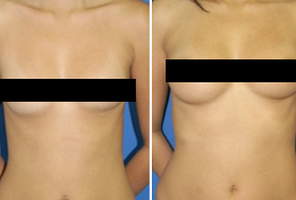In the beauty-centric society of today's United States, cosmetic surgery procedures are growing increasingly common. Millions of people each year are going under the knife to achieve a brand new or restored look. The American Society for Aesthetic Plastic Surgery keeps plastic surgery statistics on various aspects of the plastic surgery business, including the most common plastic surgeries and which demographics get the most plastic surgeries.
Total Plastic Surgery Statistics
In the year 2007, 11.7 million people underwent plastic surgery procedures in the United States, according to the American Society for Aesthetic Plastic Surgery. The vast majority - over 80 per cent of the total procedures - were non-surgical in nature, such as Botox. Only around 18 per cent of this number were surgical procedures. Overall, this was a two per cent growth from the numbers in 2006, with the majority of this growth coming from surgical procedures.
More telling is the increased number of plastic surgeries over the past decade. The number of plastic surgeries has more than doubled from what it was in 1997, and the amount of non-cosmetic procedures has ballooned to seven times the amount it was in the late nineties.
Most Popular Procedures
The most popular plastic surgery in 2007 was liposuction, which had over 450,000 procedures performed. Breast augmentation had nearly 400,000 procedures. Eyelid surgery was the third most popular plastic surgery type, and abdominoplasty and breast reduction rounded out the top five cosmetic plastic procedures.
Botox was by far the most popular non-surgical procedure. Over 2.75 million people had Botox injections in 2007, which is almost twice as many procedures performed as the second most popular procedure, which was hyaluronic acid. Other common cosmetic modifications included laser hair removal, microdermabrasion and IPL (Intense Pulsed Light) Laser treatments.
Procedures by Gender
One noticeable trend is that nearly all cosmetic surgery procedures are performed on women. Over 90 per cent of the total 11.6 million cosmetic modifications were performed on women - but this isn't anything new. The vast majority of cosmetic surgery procedures have always performed on women. The most common plastic surgery performed on women was breast augmentation, with liposuction, blepharoplasty (eyelid surgery), abdiminoplasty and breast reduction as runners-up.
For men, the most popular plastic surgery was liposuction. Eyelid surgery, rhinoplasty, breast reduction (for enlarged male breasts) and hair transplants were also common procedures.
In total, all of these plastic surgery and cosmetic procedures made the plastic surgery industry a profitable one that brought in over $13 billion in 2007.
Â
People age 35-50 had the most procedures - 5.4 million and 46 percent of the total. People age 19-34 had 21 percent of procedures; age 51-64 had 25 percent; age 65-and-over had 6 percent; and age 18-and-younger had less than 2 percent.
The most common procedures for age 18-and-under were: laser hair removal, microdermabrasion, chemical peel, otoplasty (ear reshaping) and rhinoplasty.
Traditional racial and ethnic minorities, as of last year, had approximately 21 percent of all cosmetic procedures, an decrease of 1 percent from 2006: Hispanics, 9 percent; African-Americans, 6 percent; Asians, 5 percent; and other non-Caucasians, 2 percent.
Where cosmetic surgeries were performed: office facility, 54 percent, hospital 17 percent; and free-standing surgicenter, 29 percent.
Of the doctors surveyed 70 percent say they do not offer "spa" services (e.g. wraps, facials, massages) in conjunction with their medical practices. 86 percent of the doctors say they do not work in conjunction with medical spas where nonsurgical procedures, such as injections and laser procedures are performed.
Americans spent just under $13.2 billion on cosmetic procedures last year.
Figures may not add exactly to totals and percentages may not equal 100 percent due to rounding.
2007 National Average for Physician/Surgeon Fees Per Procedure
Source: The American Society for Aesthetic Plastic Surgery for statistical data
- Breast reduction may be covered by insurance, depending on terms of the policy and individual patient factors. Fees may vary.
- Figures are for physician/surgeon fees only and do not include fees for the surgical facility, anesthesia, medical tests, prescriptions, surgical garments, or other miscellaneous costs related to surgery. Figures for procedures often performed on more than one site in the same session reflect typical fees for one site.

